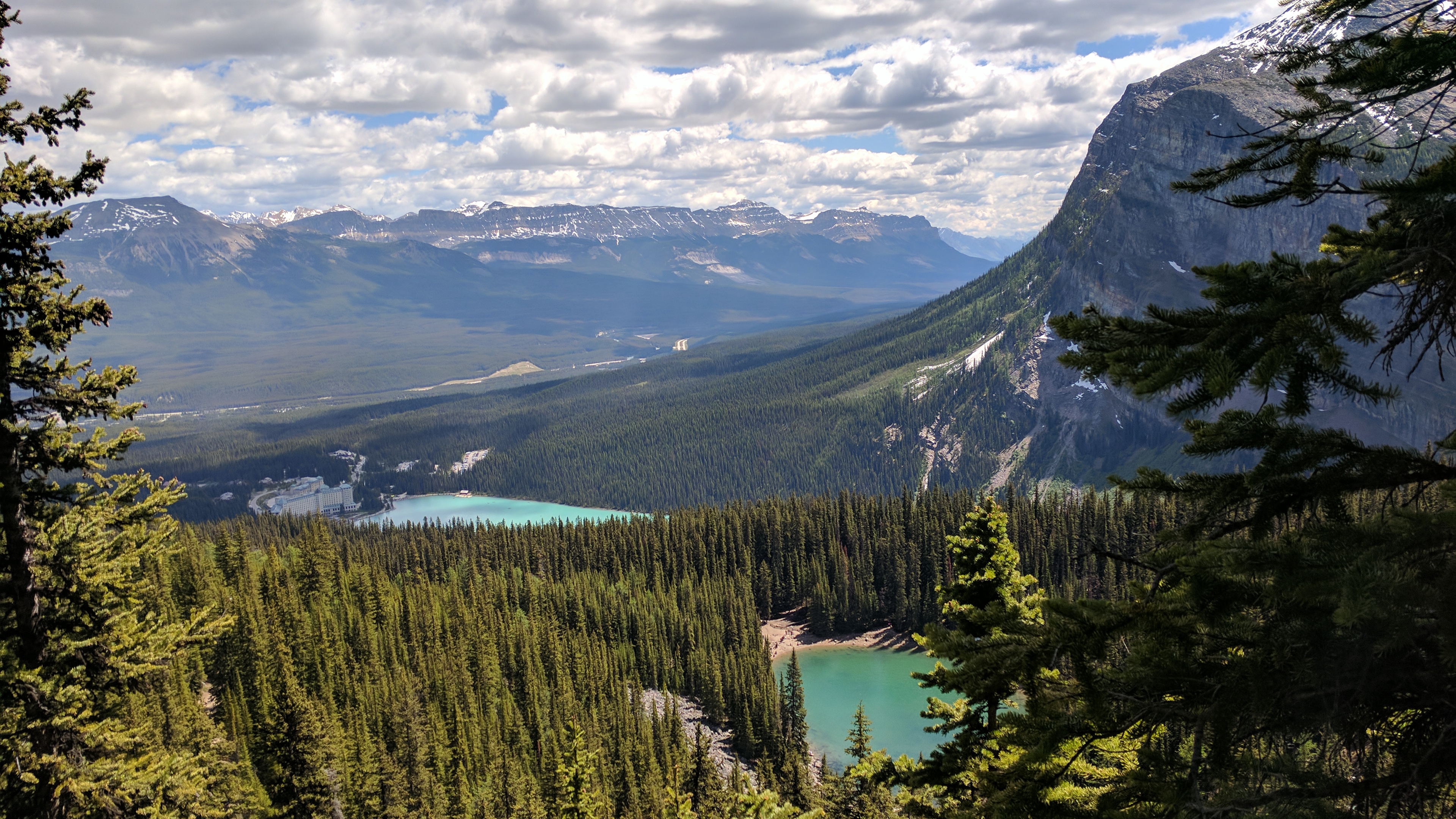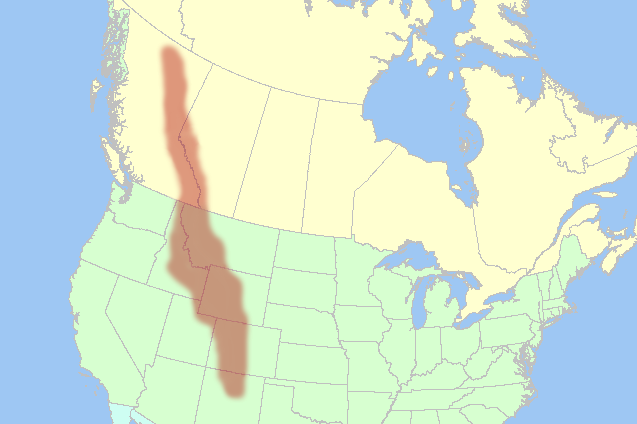|
Mount Laussedat
Mount Laussedat is a mountain summit located in the Canadian Rockies of British Columbia, Canada. It is the highest point in the Southwest Central Park Ranges. The mountain is situated north of Golden, British Columbia, Golden in the Blaeberry River, Blaeberry Valley. The first ascent of the mountain was made in 1906 by C. B. Sissons, Arthur Oliver Wheeler, and M. Wheeler. The peak was named in 1911 by surveyor Arthur Oliver Wheeler for Aimé Laussedat (1819-1907), a French military officer whose pioneering photographic surveying techniques were used by Wheeler and Canada's Interprovincial Boundary Surveyors. The mountain's name was officially adopted March 31, 1924, when approved by the Geographical Names Board of Canada. __NOTOC__ Climate Based on the Köppen climate classification, Mount Laussedat is located in a subarctic climate zone with cold, snowy winters, and mild summers. Temperatures can drop below −20 °C with wind chill factors below −30 °C. Precipitat ... [...More Info...] [...Related Items...] OR: [Wikipedia] [Google] [Baidu] |
Canadian Rockies
The Canadian Rockies () or Canadian Rocky Mountains, comprising both the Alberta Rockies and the British Columbian Rockies, is the Canadian segment of the North American Rocky Mountains. It is the easternmost part of the Canadian Cordillera, which is the northern segment of the North American Cordillera, the expansive system of interconnected mountain ranges between the Interior Plains and the Pacific Coast that runs northwest–southeast from central Alaska to the Isthmus of Tehuantepec in Mexico. Canada officially defines the Rocky Mountains system as the mountain chains east of the Rocky Mountain Trench extending from the Liard River valley in northern British Columbia to the Albuquerque Basin in New Mexico, not including the Mackenzie, Richardson and British Mountains/ Brooks Range in Yukon and Alaska (which are all included as the "Arctic Rockies" in the United States' definition of the Rocky Mountains system). The Canadian Rockies, being the northern segment of ... [...More Info...] [...Related Items...] OR: [Wikipedia] [Google] [Baidu] |
Aimé Laussedat
Aimé Laussedat (April 19, 1819 – March 19, 1907) was a French scientist, more specifically, an observational astronomer, geodesist, surveyor, photogrammetrist, and cartographer. Biography Laussedat was born in Moulins on April 19, 1819. He was an engineer, researcher and professor at the École polytechnique, then eminent manager at the National Conservatory of Arts and Crafts. He was a military engineer at the beginning of his career. He is considered the father of photogrammetry. He died on March 19, 1907 (at the age of 87), in Paris. Namesakes * Mount Laussedat * Laussedat Heights *The Colonel See also * Carlos Ibáñez e Ibáñez de Ibero – 1st president of the International Committee for Weights and Measures The General Conference on Weights and Measures (abbreviated CGPM from the ) is the supreme authority of the International Bureau of Weights and Measures (BIPM), the intergovernmental organization established in 1875 under the terms of the Metre C ... a ... [...More Info...] [...Related Items...] OR: [Wikipedia] [Google] [Baidu] |
Park Ranges
The Park Ranges, also known as the Main Ranges, are a group of mountain ranges in the Canadian Rockies of southeastern British Columbia and southwestern Alberta, Canada. It is one of the three main subranges and the most central of the Continental Ranges, extending from southeast of Mount McGregor to the Fernie Basin. Subranges * Ball Range * Blackwater Range * Blue Range * Bow Range * Chaba Icefield * Clemenceau-Chaba * Columbia Icefield * Drummond Group * Freshfields * Harrison Group * Hooker Icefield * Kitchen Range * Le Grand Brazeau *Massive Range The Massive Range is a mountain range of the Canadian Rockies, located in the southwestern area of the Bow River valley in Banff National Park, Canada. This range includes the following mountains and peaks: Geology The rock layers on the w ... * McKale-Chalco Divide * Mitchell Range * Morkill Ranges * Ottertail Range * Rainbow Range * Royal Group * Selwyn Range * Spray Mountains * Sundance Range * South Jasper Ranges ** ... [...More Info...] [...Related Items...] OR: [Wikipedia] [Google] [Baidu] |
Three-thousanders Of British Columbia
Three-thousanders are mountains with a height of between , but less than above sea level. Similar terms are commonly used for mountains of other height brackets e. g. four-thousanders or eight-thousanders. In Britain, the term refers to mountains above . Climatological significance In temperate latitudes three-thousanders play an important role, because even in summer they lie below the zero degree line for weeks. Thus the chains of three-thousanders always form important climatic divides and support glaciation - in the Alps the contour is roughly the general limit of the "nival step"; only a few glaciated mountains are under (the Dachstein, the easternmost glaciated mountain in the Alps, is, at , not a three-thousander). In the Mediterranean, however, the three-thousanders remain free of ice and, in the tropics, they are almost insignificant from a climatic perspective; here the snow line lies at around to , and in the dry continental areas (Trans-Himalayas, Andes) it ... [...More Info...] [...Related Items...] OR: [Wikipedia] [Google] [Baidu] |
List Of Mountains In The Canadian Rockies
A list of highest mountains and peaks in the Canadian Rockies over is shown below. Sources for the elevation, prominence and first ascent can be found in their respective pages and/or Wikidata Wikidata is a collaboratively edited multilingual knowledge graph hosted by the Wikimedia Foundation. It is a common source of open data that Wikimedia projects such as Wikipedia, and anyone else, are able to use under the CC0 public domain .... Gallery File:Mt. Robson from Berg Lake, reflected.jpg, Mount Robson from Berg Lake Mt. Columbia (vertical).jpg, Mount Columbia North Twin from Columbia Icefield approach.jpg, North Twin Peak References ;Notes {{reflist, group=notes Canadian Rockies, *• Canadian Rockies Mountains, Rockies Mountains, Rockies ... [...More Info...] [...Related Items...] OR: [Wikipedia] [Google] [Baidu] |
Geology Of The Rocky Mountains
The geology of the Rocky Mountains is that of a discontinuous series of mountain ranges with distinct geological origins. Collectively these make up the Rocky Mountains, a mountain system that stretches from Northern British Columbia through central New Mexico and which is part of the great mountain system known as the North American Cordillera. The rocky cores of the mountain ranges are, in most places, formed of pieces of continental crust that are over one billion years old. In the south, an older mountain range was formed 300 million years ago, then eroded away. The rocks of that older range were reformed into the Rocky Mountains. The Rocky Mountains took shape during an intense period of plate tectonic activity that resulted in much of the rugged landscape of western North America. The Laramide orogeny, about 80–55 million years ago, was the last of the three episodes and was responsible for raising the Rocky Mountains. Subsequent erosion by glaciers has produced the cu ... [...More Info...] [...Related Items...] OR: [Wikipedia] [Google] [Baidu] |
Columbia River
The Columbia River (Upper Chinook language, Upper Chinook: ' or '; Sahaptin language, Sahaptin: ''Nch’i-Wàna'' or ''Nchi wana''; Sinixt dialect'' '') is the largest river in the Pacific Northwest region of North America. The river headwater, forms in the Rocky Mountains of British Columbia, Canada. It flows northwest and then south into the U.S. state of Washington, then turns west to form most of the border between Washington and the state of Oregon before emptying into the Pacific Ocean. The river is long, and its largest tributary is the Snake River. Columbia River drainage basin, Its drainage basin is roughly the size of France and extends into seven states of the United States and one Canadian province. The fourth-largest river in the United States by River flow, flow, the Columbia has the greatest flow of any river into the eastern Pacific. The Columbia and its tributaries have been central to the region's culture and economy for thousands of years. They have been use ... [...More Info...] [...Related Items...] OR: [Wikipedia] [Google] [Baidu] |
Surface Runoff
Surface runoff (also known as overland flow or terrestrial runoff) is the unconfined flow of water over the ground surface, in contrast to ''channel runoff'' (or ''stream flow''). It occurs when excess rainwater, stormwater, meltwater, or other sources, can no longer sufficiently rapidly infiltrate in the soil. This can occur when the soil is #Saturation excess overland flow, saturated by water to its full capacity, and the rain arrives #Infiltration excess overland flow, more quickly than the soil can absorb it. Surface runoff often occurs because wikt:impervious#Adjective, impervious areas (such as roofs and Road surface, pavement) do not allow water to soak into the ground. Furthermore, runoff can occur either through natural or human-made processes. Surface runoff is a major component of the water cycle. It is the primary agent of Soil erosion#Rainfall and runoff, soil erosion by water. The land area producing runoff that drains to a common point is called a drainage basin. ... [...More Info...] [...Related Items...] OR: [Wikipedia] [Google] [Baidu] |
Subarctic Climate
The subarctic climate (also called subpolar climate, or boreal climate) is a continental climate with long, cold (often very cold) winters, and short, warm to cool summers. It is found on large landmasses, often away from the moderating effects of an ocean, generally at latitudes from 50°N to 70°N, poleward of the humid continental climates. Like other Class D climates, they are rare in the Southern Hemisphere, only found at some isolated highland elevations. Subarctic or boreal climates are the source regions for the cold air that affects temperate latitudes to the south in winter. These climates represent Köppen climate classification ''Dfc'', ''Dwc'', ''Dsc'', ''Dfd'', ''Dwd'' and ''Dsd''. Description This type of climate offers some of the most extreme seasonal temperature variations found on the planet: in winter, temperatures can drop to below and in summer, the temperature may exceed . However, the summers are short; no more than three months of the year (but at least on ... [...More Info...] [...Related Items...] OR: [Wikipedia] [Google] [Baidu] |
Köppen Climate Classification
The Köppen climate classification divides Earth climates into five main climate groups, with each group being divided based on patterns of seasonal precipitation and temperature. The five main groups are ''A'' (tropical), ''B'' (arid), ''C'' (temperate), ''D'' (continental), and ''E'' (polar). Each group and subgroup is represented by a letter. All climates are assigned a main group (the first letter). All climates except for those in the ''E'' group are assigned a seasonal precipitation subgroup (the second letter). For example, ''Af'' indicates a tropical rainforest climate. The system assigns a temperature subgroup for all groups other than those in the ''A'' group, indicated by the third letter for climates in ''B'', ''C'', ''D'', and the second letter for climates in ''E''. Other examples include: ''Cfb'' indicating an oceanic climate with warm summers as indicated by the ending ''b.'', while ''Dwb'' indicates a semi-Monsoon continental climate, monsoonal continental climate ... [...More Info...] [...Related Items...] OR: [Wikipedia] [Google] [Baidu] |
Geographical Names Board Of Canada
The Geographical Names Board of Canada (GNBC) is a national committee with a secretariat in Natural Resources Canada, part of the Government of Canada, which authorizes the names used and name changes on official federal government maps of Canada. History It was created in December 1897, by Order in Council, as the Geographic Board of Canada. It consisted of one Board member from each of four Government of Canada departments, as well as the Surveyor General of Dominion Lands, while a secretariat was provided by the then-extant Department of the Interior. In December 1899, the Order in Council was amended to give the Canadian provinces and territories the right to nominate one official, each, to be a Board member. The board was succeeded by the Canadian Board on Geographic Names in 1948, then reorganized as the Canadian Permanent Committee on Geographic Names (CPCGN) in 1961. Structure , the Board consists of 27 members, one from each of the provinces and territories, and ot ... [...More Info...] [...Related Items...] OR: [Wikipedia] [Google] [Baidu] |





